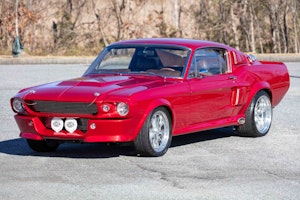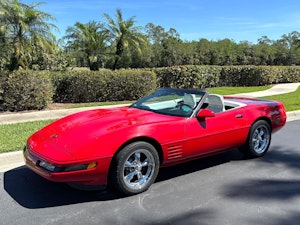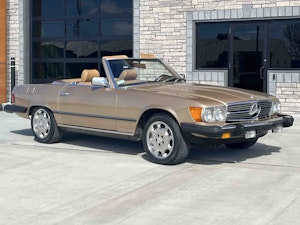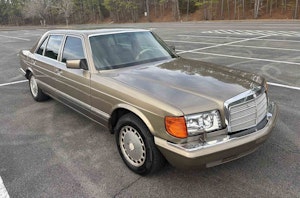Media | Articles
Michael Furman has shot cats, prefers photographing cars
Skill, high standards, hard work and good timing. All have played a role in making Michael Furman one of the best-known automotive photographers in the world. His stunning photography has graced the pages of 15 highly acclaimed automotive books and he holds celebrity status from Amelia Island to Pebble Beach. Furman is thoughtful, self-deprecating and enormously talented. His ability to place cars in the best possible light — literally and figuratively — is his signature. We spoke to him after the 2016 Amelia Island Concours d’Elegance.
Where did your love of cars come from?
MF: I grew up in Philadelphia, and my dad (Mitchell) always liked cars, but he really loved trucks. He grew up poor during the Depression, working for my grandfather, who had a rug cleaning business. If you can find something else to do with your life, I would recommend it. The rug cleaning business is hard, dirty work. The business had a number of trucks, and my father really loved them. During WWII, he drove a lot of vehicles in the military motor pool. His love for cars and trucks rubbed off on me and my twin brother (Marc).
Are there any cars from your childhood that stand out?
MF: A neighbor to our business had some nice cars — a Mercedes 190SL, a Jaguar XK120. He let my father take them home on weekends sometimes. I can remember sitting in the boot (trunk) with my brother and making car noises.
Growing up, Philadelphia didn’t have much of a car culture. It wasn’t like Detroit or California; it wasn’t American Graffiti. We were a bunch of Jewish kids who didn’t get our hands dirty. We’d whine to our parents and they’d buy us a car. (Laughs)
All the guys I grew up with loved cars and imagined driving cars. A car meant freedom — a means to get out of the house. It isn’t the same today. Kids today don’t need a car for freedom. They have phones. They can text their friends. They text friends who are sitting right next to them.
Marketplace
Buy and sell classics with confidence
How did you get involved in photography?
MF: A neighbor of mine had a camera, and we started taking pictures of things. That was 50 years ago, and we’re still friends. His father knew I was interested in photography and taught me some things. The first car I photographed was a 1963 Split-Window Corvette. I photographed all sorts of things.
My mother (Eleanor) wouldn’t let me play sports, because she thought I’d get hurt. So I photographed sports instead. People photograph whatever it is they want to have a relationship with, whether it’s girls or cars or sports or whatever. Quite often photography is the only thing that gets you access to the stuff you’d like to be close to. A lot of people in my photography classes just wanted to shoot bands because they wanted to be part of the music scene.
When did photography become a career ambition?
MF: Pretty early on. In junior high I’d sit in class and stare out the window and watch what the light was doing, how it changed the look of things as it moved from one place to another. That fascinated me.
I was lucky at a young age to stumble upon my future career. A lot of kids wonder what they’re going to do with their life. I wanted to be a photographer.
When I went to college (at Rochester Institute of Technology), my classmates were mostly men. I had no car. I rode a bicycle. I didn’t have a lot to do. I had keys to the darkroom and I started doing studio work. By the time I graduated I had a good portfolio of studio work, and I was able to start working right away.
Over the years I photographed just about everything. I’ve shot clothing, appliances, shoes. I shot for a pharmaceutical firm. I’ve photographed puppies, rabbits, camels, cows, fish, birds, cats… If you didn’t know it already, cats are a real pain in the ass, by the way.
You started in New York?
MF: I lived in New York City for a while but didn’t like it. I knew I could exist there photographically, but could I exist there personally? I decided I couldn’t. So I moved home to Philadelphia. I asked my dad if I could open a studio in the garage, and he said, ‘If you clean it, you can do anything you want.’ So MF Photography was born.
Federal Express came along about that time (it opened for business in 1973, one year after Furman graduated from RIT). And FAX machines. You could send photos anywhere pretty quickly. And you could share a layout by FAX. I didn’t need to drive across town or ride a bus anywhere. I could pull work from all over the country and live where I wanted to live. Taking the pressure off of me personally allowed me to flourish professionally.
What was the first car you photographed professionally?
MF: The first was for Mercedes. I took some shots and sent the photos to the Mercedes-Benz offices in New York, and the next day they brought me in for a shoot. That seems unbelievable by today’s standards, but that’s absolutely how it happened.
I shot a lot of new cars over the years, and at some point someone asked me to shoot classic cars. About 15 or 20 years ago I started doing that exclusively. I got into it just as concours and auctions were taking off. I just followed my passion, and as often happens, I had the good fortune of being in the right place at the right time.
At some point you decided to start publishing books, and now you have your own publishing company, Coachbuilt Press. How did that come about?
MF: I started a publishing company because I wasn’t happy with a certain major publishing company that wouldn’t publish my work. Major publishing companies are all about making money. Period. They should just skip printing books and go straight to printing money. It would save time. They don’t care about how good the photos look, how they’re cropped or if there are printing mistakes in the copy. As long as they can make money, they’ll let it go. My standards are much higher than that. It drove me crazy.
People say I’m meticulous, and yes, I’m meticulous. I can’t deny that. I want to do everything the very best that I can, starting with the first book I did. I care so much about the cars. I feel an obligation to each one I photograph. It’s my job to express that car. If I do right by the car, then I’m satisfied. If I don’t make money, that’s just how it goes.
My philosophy is, if you do something worthwhile, then you’ll make money. But if your number one goal is to make money, you’re going to take shortcuts. I’m not willing to do that. I’ve been told, ‘You have too many assistants.’ I only have as many assistants as I need. If we could fit everybody into a Motel 6, I would do that. But I have to live by my own standards. My standards are definitely high — my shrink says they’re too high. F*** my shrink. (Laughs)
If I charge somebody to do a job and it costs me just as much to do it right, so be it. At least it’s something I can be proud of. Would you rather have a guy who does $50 worth of work and charges you $1,000 for a sh***y job?
What cars have you most enjoyed photographing?
MF: That’s really tough. They’re all wonderful for different reasons. The one I remember most was a Stout Scarab (a 1930s–40s “minivan”) that I photographed in Detroit. When we were finished the owner asked, ‘Do you want to go for a ride?’ So we all got in. But it had ‘occasional seating,’ which means only the driver’s seat was bolted to the floor. The rest of us sat in lawn chairs. Every time we turned a corner, we all fell over. It was hilarious, but it said a lot about the lack of amenities in a lot of classic cars.
People love cars for different reasons. My love for cars started as purely aesthetic. Now I have historical appreciation of them, too. Some people see a car and say, ‘Man, I’d love to drive that.’ I don’t do that, but who cares? If you say you like cars, it doesn’t matter what you like about them. The fact is, you like them, and that makes you part of the club. That’s all that’s required for membership.
There’s so much out there. We’re lucky if we get a small peek at it.










